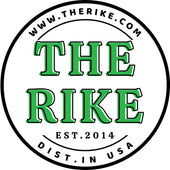Urban Herbalism: How to Grow Medicinal Herbs in Your Backyard
In an age where wellness and natural remedies are on the rise, urban herbalism has become increasingly popular. The idea of cultivating medicinal herbs in your backyard or balcony not only contributes to personal health but also promotes sustainable living. This article explores various aspects of growing medicinal herbs in urban settings, offering practical tips, popular herbs, and additional resources.
1. Understanding Urban Herbalism
Urban herbalism refers to the practice of cultivating and using medicinal plants in urban environments. Whether you live in a bustling city, suburban neighborhood, or a small town, the ability to grow your healing herbs is not just an accessible hobby but also a means to reconnect with nature.
2. Benefits of Growing Medicinal Herbs
Growing medicinal herbs provides numerous benefits:
- Health Benefits: Access to fresh herbs for teas, tinctures, and topical applications.
- Cost-Effective: Reduce spending on herbal remedies by growing your own.
- Environmentally Friendly: Contributes to biodiversity and reduces carbon footprint.
- Educational Opportunities: Increases knowledge about plants, gardening, and nutrition.
- Stress Relief: Gardening can be therapeutic and calming for the mind.
3. Choosing the Right Space for Your Herb Garden
Before diving into planting, consider the space you have available.
3.1. Balcony and Containers
If you live in an apartment, a balcony garden or window boxes can be the perfect solution. Use pots, crates, or vertical gardens to maximize your space.
3.2. Backyard Gardens
If you have a yard, you can establish a dedicated herb garden or intersperse herbs throughout your flower or vegetable gardens.
3.3. Indoor Herb Gardens
Indoor gardening can be done with adequate light, making use of shelves or hydroponic setups. Windowsills or spots that receive indirect sunlight can work well for indoor herbs.
4. Selecting Medicinal Herbs to Grow
When choosing which medicinal herbs to grow, consider the following popular options:
- Basil: Great for digestion and has anti-inflammatory properties.
- Mint: Useful for gastrointestinal issues and can be used in teas.
- Calendula: A powerful skin healer known for its anti-inflammatory qualities.
- Chamomile: Often used for relaxation and sleep aid.
- Echinacea: Boosts the immune system and helps with colds.
- Lavender: Great for stress relief and skin conditions.
- Rosemary: Memory-boosting properties and rich in antioxidants.
5. Preparing Your Soil and Garden Bed
Healthy soil is the foundation of a thriving herb garden.
5.1. Testing Soil Quality
Test your soil for pH and nutrient content. Most herbs prefer slightly acidic to neutral soil (pH 6.0-7.5).
5.2. Soil Improvements
Enhance your soil by adding organic matter, such as compost, or adjusting pH levels as necessary.
5.3. Drainage
Ensure proper drainage to prevent root rot. If using pots, make sure they have drainage holes.
6. Planting Your Herbs
When planting herbs, timing and spacing are important.
6.1. Starting from Seeds vs. Transplants
Seeds can be cheaper and provide more options, but transplants offer a quicker start. Consider your local climate and the growing season.
6.2. Planting Technique
Plan your layout according to each plant's sun, space, and watering needs. General spacing guidelines are:
- Small herbs: 6-12 inches apart (e.g., chives, thyme).
- Larger herbs: 12-24 inches apart (e.g., basil, rosemary).
7. Care and Maintenance
To grow healthy medicinal herbs, consistent care is essential.
7.1. Watering
Ensure your herbs receive adequate water, especially during dry spells, but avoid waterlogging. A general rule is to water when the top inch of soil feels dry.
7.2. Weeding
Regularly remove weeds that compete for nutrients and space.
7.3. Pruning and Harvesting
Prune your herbs regularly to encourage bushy growth and to collect leaves for use. Harvesting can be done at any time during the growing season as long as you leave enough foliage for the plant to continue growing.
8. Pest and Disease Management
Understanding common pests and diseases can help you protect your herb garden.
8.1. Natural Pest Control
Attract beneficial insects, use neem oil or insecticidal soap as eco-friendly options.
8.2. Recognizing Disease
Look for signs of distress – spots, wilting, or discolored leaves often indicate a problem.
9. Harvesting and Using Medicinal Herbs
Knowing when and how to harvest your herbs is crucial for maximizing their potency.
9.1. Correct Harvesting Techniques
Harvest herbs in the morning after dew has dried for the best flavor and oil content.
9.2. Methods of Use
Your homegrown herbs can be used in various ways: teas, tinctures, salves, or simply as culinary additions.
10. Preserving Your Harvest
Explore various techniques to extend the shelf life of your medicinal herbs:
- Drying: Hang herbs in a cool, dry place away from sunlight.
- Freezing: Chop and place in ice cube trays with water or oil.
- Infusing: Create oils or tinctures for later use.
11. Resources for Further Learning
Here are additional resources to help you delve deeper into urban herbalism:
- HerbMed.org - A database of medicinal herbs.
- Gardeners.com - Comprehensive gardening advice and supplies.
- LocalHarvest.org - Find local farmers and organic produce.
12. Conclusion
Urban herbalism is an accessible and rewarding practice that allows you to cultivate health and wellness right from your home. By understanding the essentials of growing, maintaining, and using medicinal herbs, you can significantly enrich your life and contribute positively to your community. Start small, experiment, and enjoy the journey of connecting with nature.





Leave a comment